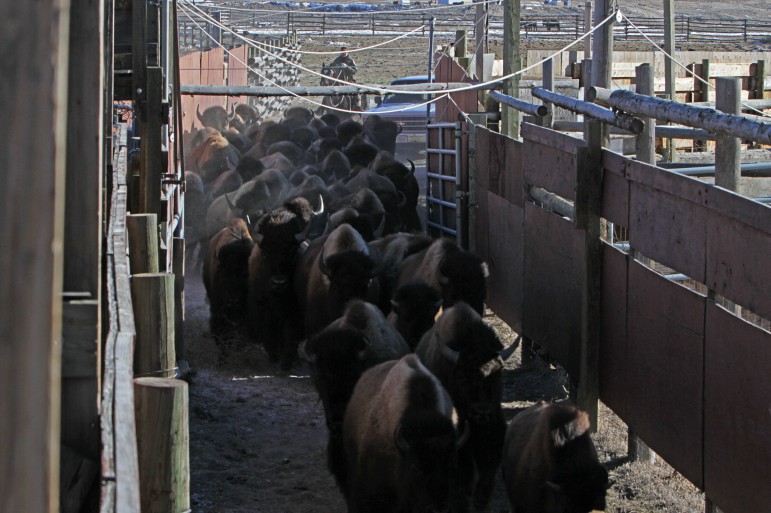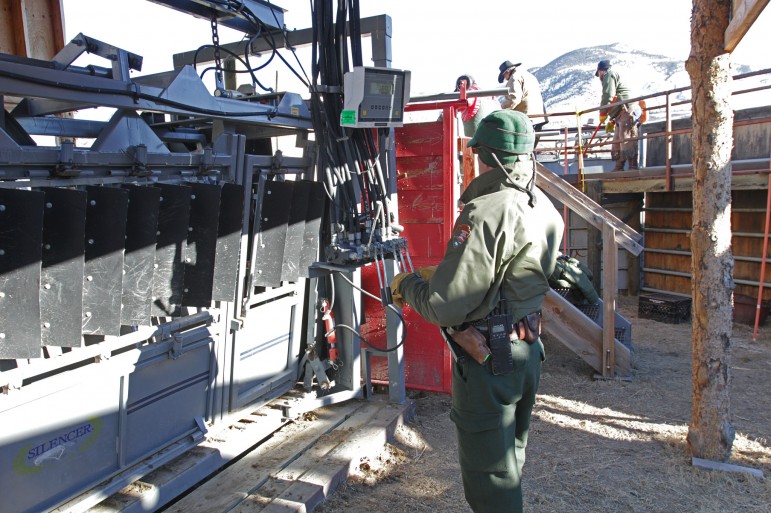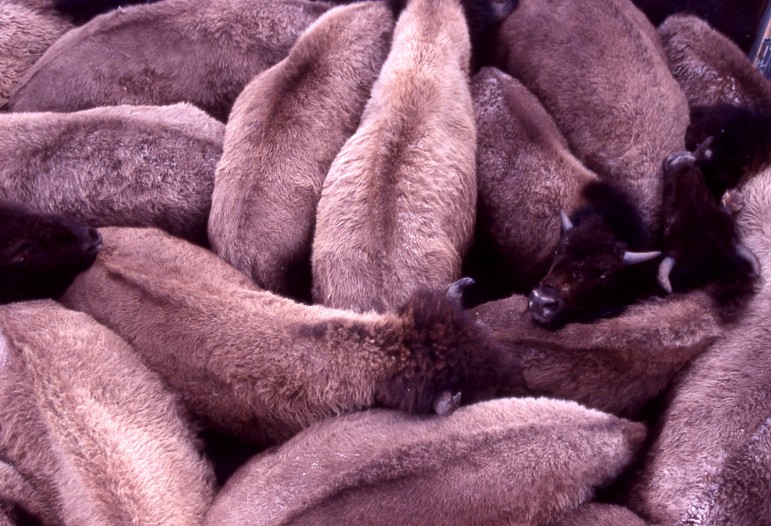
CODY, WYO. — A lawsuit filed Tuesday in U.S. District Court in Wyoming claims the National Park Service is improperly restricting press and public access to bison culling operations in Yellowstone National Park.
The plaintiffs—a freelance journalist and a wildlife advocate—say the seasonal closure of a large section of Yellowstone land around a bison capture and sorting facility amounts to censorship of those working to share details of how hundreds of the park’s bison may be shipped for slaughter this winter.
Under a bison management plan worked out by a number of federal, state and tribal agencies, wildlife managers will use a facility near Gardiner, Mont. to capture and hold hundreds of bison. Most will be shipped for slaughter under an agreement with regional Tribal groups, which process the bison for food and other uses.
Between 600-900 bison are expected to be killed this winter through hunting and slaughter, as Yellowstone works to reduce its herd of approximately 4,900 bison to a target size of approximately 3,500. The reduction efforts are the result of a management plan developed after the state of Montana sued Yellowstone in 1995, citing concerns about wayward bison transmitting disease to domestic cattle herds and damaging private property.
The Stephens Creek capture facility has been used for two decades. Last year, more than 500 bison were removed under the interagency management plan. More than 700 bison calves are born in Yellowstone during a typical year.
Freelance journalist Christopher Ketcham and wild bison advocate Stephany Seay, plaintiffs in the suit filed Tuesday, say the Park Service excludes the public and the press from a 7-mile area around Stephens Creek in an effort to prevent them from documenting how bison are handled during the culling process.
More than a decade ago, the public and press were regularly allowed inside the Stephens Creek facility, but have been excluded in recent years as public controversy over bison culling has grown, the suit alleges.

Yellowstone spokeswoman Sandra Snell-Dobert said the Park Service hosted a tour of the empty facility earlier this month, and will offer media and stakeholders two opportunities to visit Stephens Creek later this winter.
The suit calls such managed, escorted access on specific days “sterilized tours” that don’t offer “meaningful access” for public oversight of operations.
Snell-Dobert said outside observers are excluded from the facility during active operations for safety reasons.
“It’s about public safety, but also about trying to reduce stress on the animal,” she said.

Snell-Dobert said such a large exclusion zone is necessary so that bison will feel comfortable enough to wander toward capture pens as they graze.
Bison move out of the park’s higher elevations in winter to seek better forage in areas around Gardiner and to the north.
Park managers, including Superintendent Dan Wenk, have said they are not happy about being required to cull bison under the joint management plan, and are seeking increased access for bison outside the park.
Ketcham is a freelance writer whose work has appeared in Vanity Fair, Harper’s, VICE, GQ, The Nation and other publications. Seay is a Montana-based bison advocate who has documented culling operations for several years.
The plaintiffs cite what they say is a First Amendment right to document and report on bison culling operations. They are asking the court to grant them access to the Stephens Creek facility and elsewhere “to view and/or record all herding, trapping, sorting and shipping activities from a distance that allows observation with the naked eye.”
No bison are slaughtered at Stephens Creek, and culling and shipping operations are set to take place Feb. 15-March 15, Snell-Dobert said.
Contact Ruffin Prevost at 307-213-9818 or [email protected].
